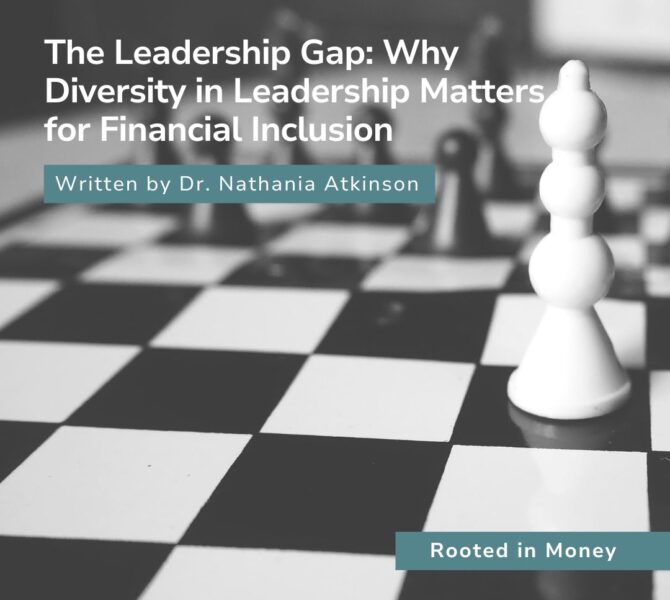The Leadership Gap isn’t about Colour, its about consciousness.
Why Diversity Must Redefine Financial Power: “What we cannot imagine cannot come into being.” – bell hooks, Teaching to Transgress1 (1994)
The most powerful institutions in Britain remain haunted by what they refuse to imagine. There is a silence at the top of the financial sector that reverberates through every decision and every missed opportunity to serve communities excluded not by accident, but by architecture.
The McGregor-Smith Review (2023) found that fewer than one in ten senior leaders in finance and professional services come from minority backgrounds. Within that, Black representation is almost invisible. The Financial Conduct Authority (2022) conceded that “diversity is not keeping pace with ambition.” This is not merely a representational failure; it is an imaginative one. A system that cannot imagine leadership beyond whiteness cannot imagine a just economy.
To rebuild, financial institutions must learn to see imagination as infrastructure, not branding. That begins with embedding Community Imagination Labs inside major banks, spaces where local entrepreneurs, cooperatives, and Black-led ventures co-design financial products grounded in lived realities rather than corporate assumptions.
Diversity as Optics
The sector continues to treat diversity as performance, smiling faces in campaigns and token appointments framed as progress. As hooks (2000) warned, such gestures create “a false sense of inclusion that pacifies rather than transforms.”
What Black women require is not symbolic inclusion but ontological transformation, a revaluation of how knowledge, credibility, and belonging are defined and by whom. Diversity must evolve from representation to an infrastructure of thought, one that considers class, migration, literacy, grief, and gender alongside race.
When institutions stop asking how to diversify their boards and start asking how to decolonise their decision-making, they make room for new forms of financial intelligence rooted in Black and diasporic life, rotating savings circles, remittances, and mutual credit networks. These have long been dismissed as risk when they are, in fact, models of resilience.
Conscious leadership interrogates not only who holds power but how power itself is structured. It begins with epistemic audits of how risk, value, and trust are defined and who those definitions exclude. It continues through reciprocity funds that reinvest institutional profits into community-owned cooperatives. These are not gestures of charity but acts of consciousness: strategic investments in new systems of value.
Unseen Leadership – The Genius the System Ignores: “Not everything that is faced can be changed, but nothing can be changed until it is faced.” – James Baldwin, The New York Times Book Review (1962)
Where institutions claim scarcity, Black women generate abundance. Across Britain and beyond, they build cooperatives, creative networks, and systems that move and scale resources with precision and trust.
Patricia Hill Collins (2000) calls this “a politics of empowerment grounded in lived knowledge.” This is leadership, relational, strategic, and emotionally intelligent, yet it is rarely recognised because it does not mimic institutional authority that prizes governance over guidance, imagination, and care. By that measure, Black women have long been architects of adaptive intelligence: designing under constraint, innovating under exclusion, leading through collective care. The system does not lack Black talent; it lacks the humility to learn from that genius.
With conscious and imaginative transformation in governance, financial institutions could begin learning through Leadership Residencies, reciprocal exchanges where Black women innovators teach institutions how to lead through care, creativity, and cooperation.
Reimagining Financial Futures – The Call to Conscious Leadership: “We need to shift from having more to being more.” – Mamphela Ramphele (2020)
Finance must now move from equity as compliance to equity as a design principle. This moment demands not symbolic reform but structural reinvention, a reordering of value that places consciousness, equity, and community intelligence at the centre of financial design.
Three imperatives define finance’s future:
- Build Community Capital Labs: Establish permanent design hubs where Black-led ventures, cooperatives, and financial institutions co-govern capital flows. These labs must prototype trust-based lending models, integrate local economic knowledge into mainstream financial instruments, and measure success by community resilience rather than quarterly returns.
- Legislate Participatory Governance: Create Participatory Design Boards with authority to shape investment criteria, risk models, and policy frameworks. Move beyond consultation to shared governance. Value must be defined with, not for, the communities’ finance claims to serve.
- Institutionalise Conscious Leadership: Embed Equity Literacy into all executive and board development. Teach leaders to read systems of power as precisely as they read markets. Redesign incentives to reward reciprocity, transparency, and long-term social repair over short-term extraction. Conscious leadership must be measurable, teachable, and accountable.
These are not symbolic gestures; they are the baseline infrastructure of ethical and effective finance. Institutions that operationalise consciousness will lead the transition from extraction to regeneration, from scarcity to shared security.
“Revolution is not a one-time event.” Audre Lorde, Sister Outsider (1984)
Author Bio: Dr. Nathania Atkinson is an architect of diaspora futures and a principal strategist-researcher whose work explores the intersections of Black womanhood, financial imagination, and the creative and cultural economies shaping diasporic transformation. Bridging strategy, scholarship, and creative leadership, she redefines diversity as consciousness rather than compliance. Her work challenges institutions to decolonise systems of value and leadership through frameworks rooted in Black feminist and diasporic thought. A transatlantic thinker and practitioner, Dr. Atkinson builds infrastructures of trust, care, and innovation that recode power toward inclusive, self-determined futures.

